How to use the Material Separation Photoshop Plugin
Updated: 02/27/2025
Display of material separation panel
Open the Material Separation panel by selecting the [Plugin] menu -> [Live2D Cubism Material Separation] -> [Material Separation].

Alternatively, it can be accessed via the [Plugin] panel -> [Live2D Cubism Material Separation].

Configuration of the material separation panel
The [Material Separation] plugin is displayed in the following panel.

| Number | Name | Description |
|---|---|---|
| 1 | Cut Out | You can cut out a recognized object from an image by specifying a selection range. |
| 2 | Transparency Fill | You can transparency fill an image by specifying a selection range. |
| 3 | Create layer in new group | When [Cut Out] or [Transparency Fill] is executed, a new group is created and a layer is created in the group. |
| 4 | Create New Masked Layer | When [Cut Out] or [Transparency Fill] is executed, a layer is created with a layer mask applied. |
| 5 | Fill Cut Out Area | When [Cut Out] is executed, a layer with a color filled background is created below the cut out layer. |
| 6 | Expand Cut Out Area | When [Cut Out] is executed, the cut out region is expanded and the selected object is cut out slightly larger. |
| 7 | Use GPU when possible | If a GPU is available, the GPU is used for processing. |
| 8 | Menu button | Clicking [About] from the menu displays the [About] dialog box, which allows you to check whether the current processing device is a GPU or CPU. |
Cut Out and Transparency Fill:
The material separation plugin consists of two functions: [Cut Out] and [Transparency Fill].
The selection range must be specified before use.
Specify a selection
Using Photoshop’s Select Tool or other tools, select the object you wish to separate into materials.
The following is an example of specifying the selection range for the rabbit to cut it out of the hat.
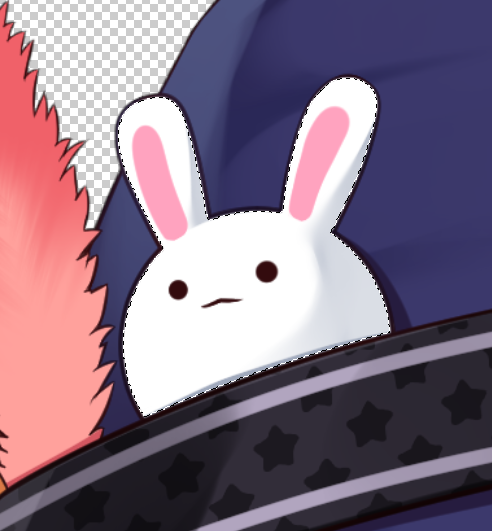
Tips
The selection needs to fall within a rectangle no larger than 4 million pixels.
Cut Out
Click [Cut Out] with a selection specified to cut out the image with anti-aliasing applied, recognizing the exact shape of the target.
The cut out result is created on a separate pixel layer from the original layer (source image).
| Select | Cut out result |
|---|---|
 | 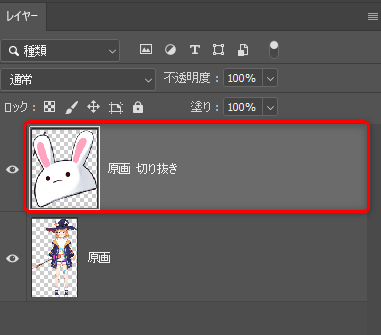 |
Tips
When “Cut Out” or “Transparency Fill” is executed, a new layer is created that is different from the original layer.
In this case, the original layer name is inherited and the function name is added to the layer name. (The same applies to the group name.)
Example:
Original layer name: “Source Image”
Created layer name: “Source Image Cut Out”
Plugin options:
Using only the [Cut Out] button will only separate the layers, but setting the optional checkboxes in the plugin will make it easier to use.
Each optional setting is explained below.
Create layer in new group
With the [Create layer in new group] checkbox selected, click [Cut Out].
A new group will be created and the layer resulting from the cut out will be stored in it.
| Select | Cut out result |
|---|---|
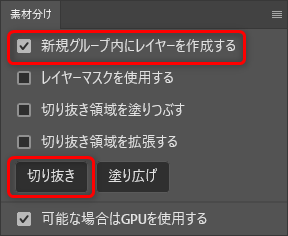 | 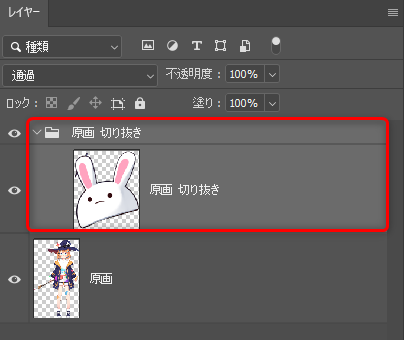 |
Create New Masked Layer
With the [Create New Masked Layer] checkbox selected, click [Cut Out].
The cut out result is saved as a layer mask.
If you want to modify the result, for example, you can adjust it in the layer mask.
| Select | Cut out result |
|---|---|
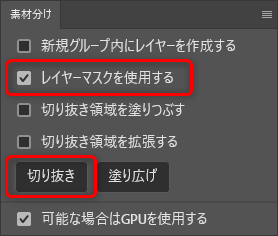 | 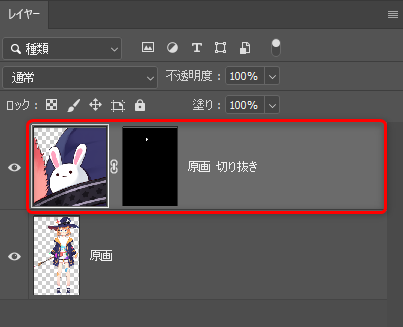 |
Fill Cut Out Area
With the [Fill Cut Out Area] checkbox selected, click [Cut Out].
A cut out layer and a color filled layer are created.
The color filled layer fills the cut out region to blend in with its surroundings and creates the result as a pixel layer.
| Select | Cut out result |
|---|---|
 |  |
| Select | Color filled state |
|---|---|
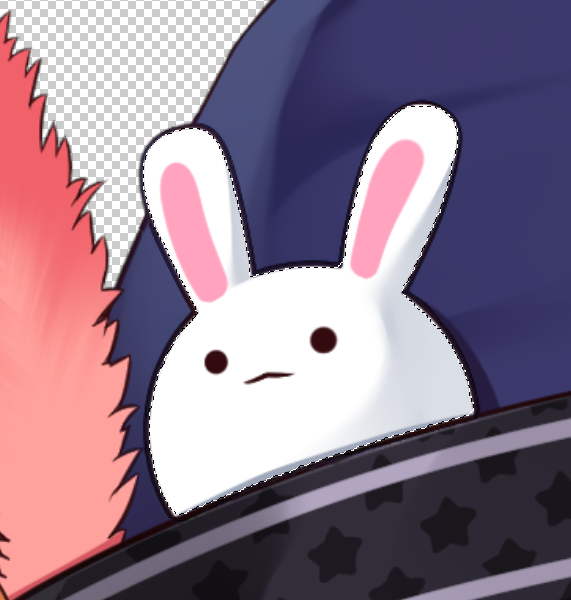 | 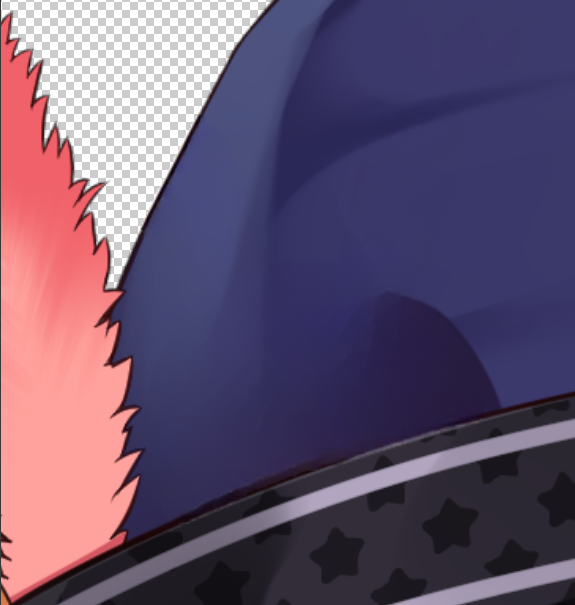 |
Expand Cut Out Area
With the [Expand Cut Out Area] checkbox selected, click [Cut Out].
The cut out area is expanded, and the selected object is cut out a little larger.
Note: This option is intended for the manual reduction process after cutting to a little larger size.
If you want automatic cutout with high accuracy, please do not set this option.
| Select | Normal result | Expanded result |
|---|---|---|
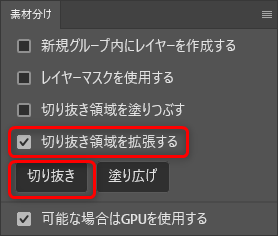 |  |  |
Cut Out Multiple Layers/Groups
Starting with beta 1, Cut Out and Transparency Fill can be used for illustrations that have a layered structure with separate line and filled layers or separate shade layers, in addition to a single source image.
Creation example:
In the following example, a suspender is cut out of pants with separate layers of lines and fill.
(Note: The area enclosed by the red line is the suspender.)
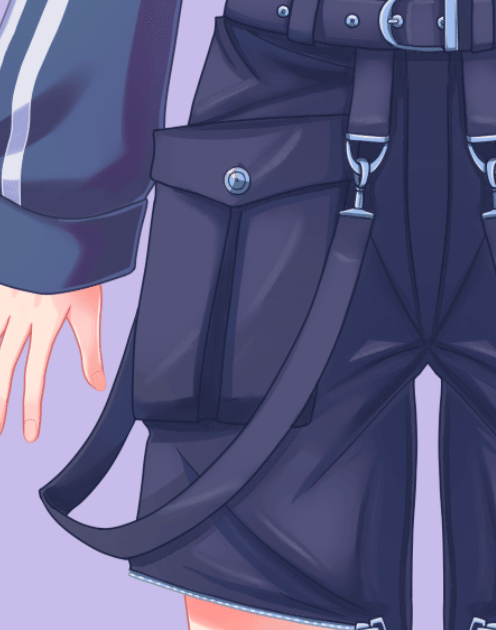
With the following plugin options checkboxes selected, we will actually cut it out of the image.
- Create layer in new group
- Create New Masked Layer
- Fill Cut Out Area
Creation procedure:
- Use the selection range to specify the region to be cut out.
- Select the line and filled layers. (Group selection is also acceptable.)
- Click [Cut Out] in the plugin.
- “Cut Out” and “Color Fill” groups are created.
| Specify a selection | Select layers (A = line, B = filled) |
|---|---|
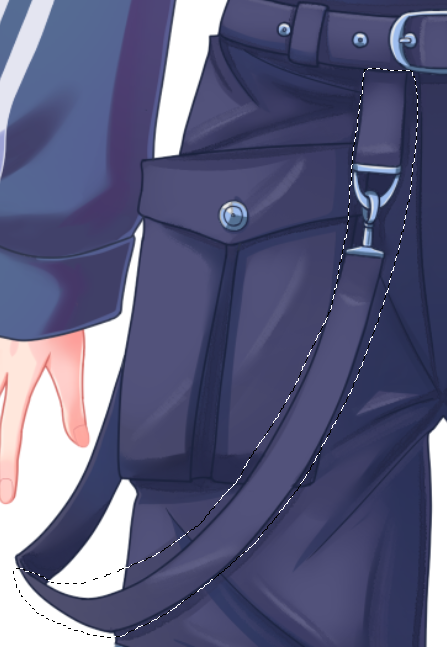 | 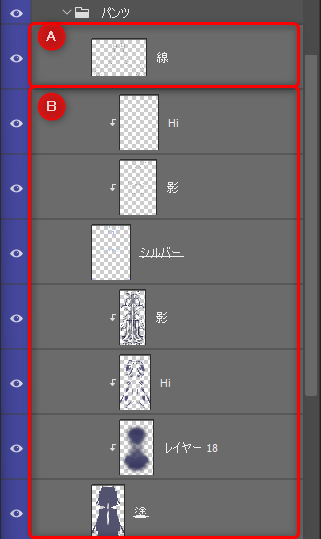 |
| Cut out result | Created groups (C = Cut Out, D = Color Fill) |
|---|---|
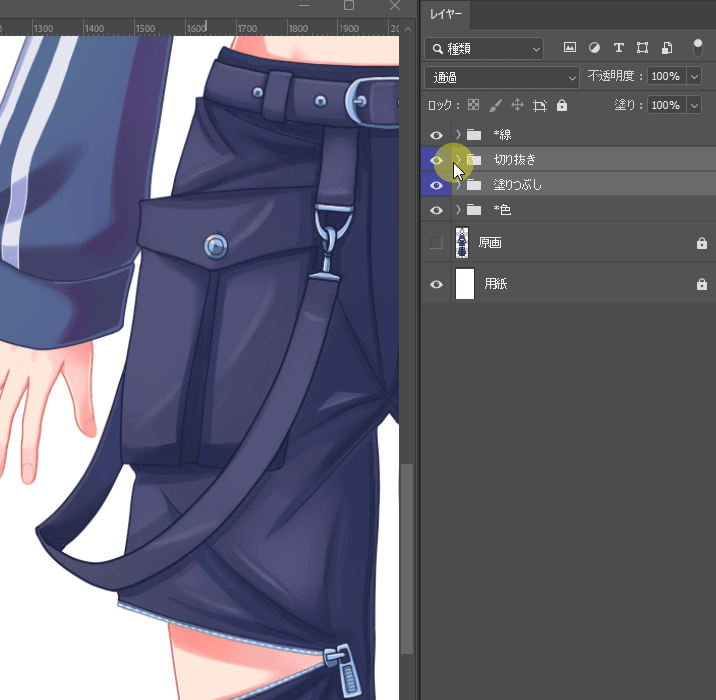 |  |
Tips
Selecting both line and fill will improve accuracy.
Configuration of the cut out group:
The cut out layer retains the layer structure of the original group.
The group configuration will be as follows according to the optional setting of “Create Layer in New Group.”
| Selected | Cleared |
|---|---|
 | 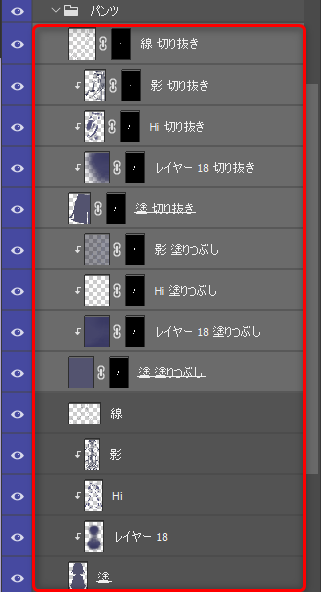 |
| The “Cut Out” and “Color Fill” groups are created on the same level above the original group, and the “Cut Out” and “Color Fill” layers are created in the groups. | The “Cut Out” and “Color Fill” layers will be created on the same level above the original layer. |
Transparency Fill
Clicking [Transparency Fill] with a selection specified will fill the selected area.
The transparency fill result is saved in a separate pixel layer from the original layer.
[Transparency Fill] characteristics:
- The fill is applied to the “transparent area” within the selection.
- A pixel layer is created below the original layer.
| Select | Transparency fill result |
|---|---|
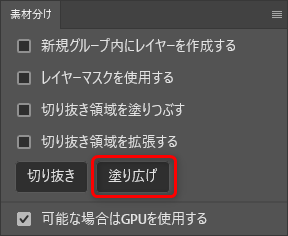 | 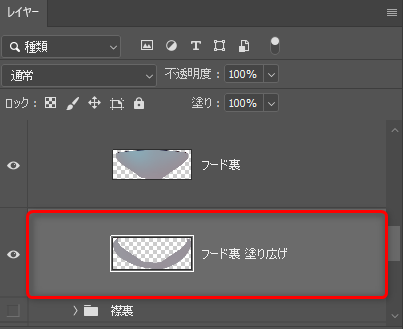 |
| Select | Transparency filled state |
|---|---|
 |  |
Transparency fill of multiple layers and groups
Creation example:
In the following example, transparency filling is performed for the skin with separate layers for lines and fill (clothing and skin).
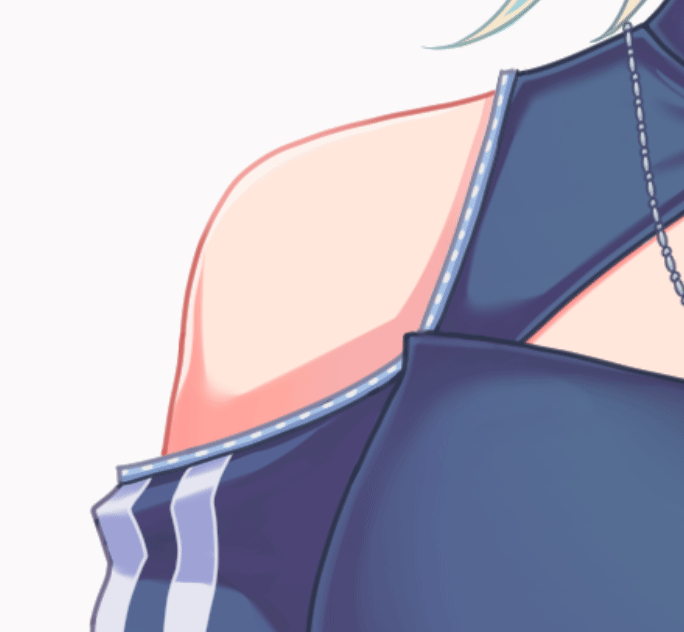
With the following plugin option checkboxes selected, we will actually create the transparency fill.
- Create layer in new group
- Create New Masked Layer
Creation procedure:
- Use the selection range to specify the region to be transparency filled.
- Select a filled group (the skin in the example below).
- Click [Transparency Fill] in the plugin.
- A group for [Transparency Fill] is created.

Tips
It is possible to perform transparency filling for a clipping mask layer alone, but in that case [Create layer in new group] will be disabled and the layer will be created in a clipped state.
Configuration of the transparency filling group:
The transparency filled layer retains the layer structure of the original group.
The group configuration will be as follows according to the optional setting of “Create layer in new group.”
| Selected | Cleared |
|---|---|
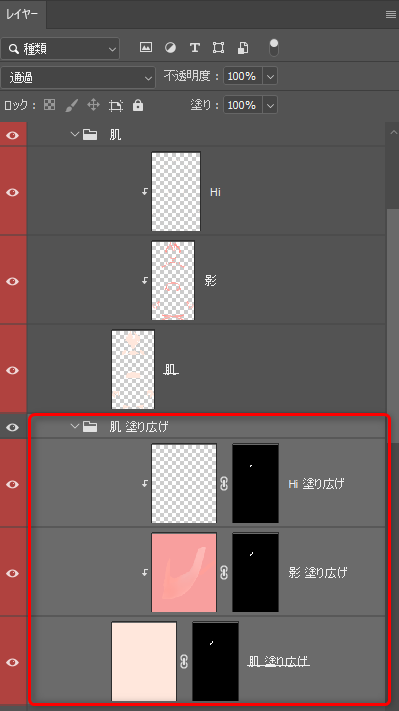 |  |
| A group for “Transparency Fill” is created under the original group at the same level, and “Transparency Fill” layers are created in this group. | “Transparency Fill” layers are created at the same level below the original layer. |
Tips
If clipping is done on multiple layers, only the layers contained within the specified selection range will be created.
In the example image below, the layers for the nose and lips are excluded because the fill of (A = nose and lips) is not drawn within the selection of (B = shoulder).

